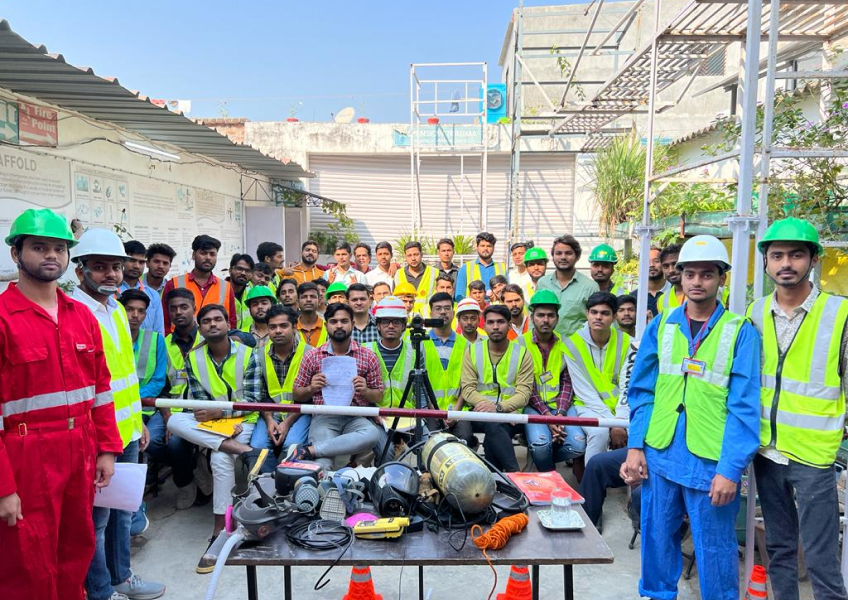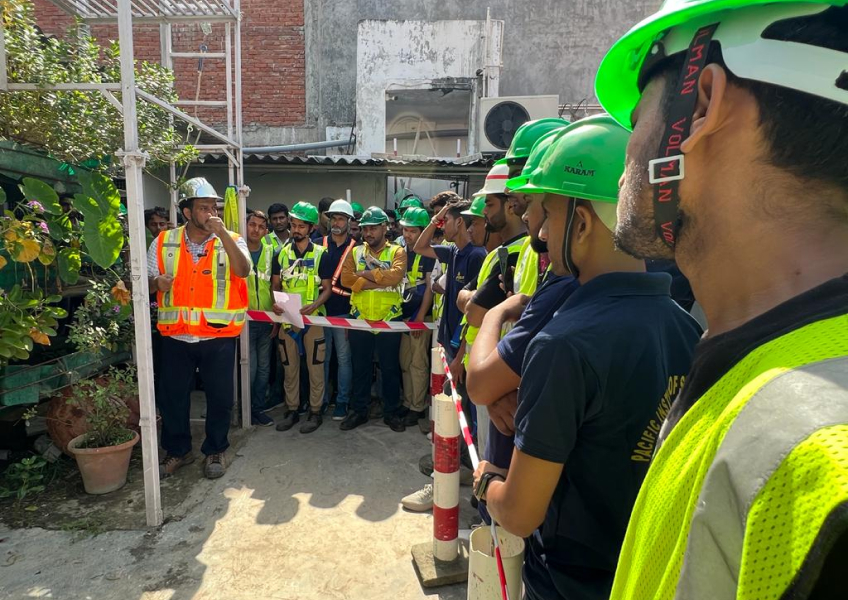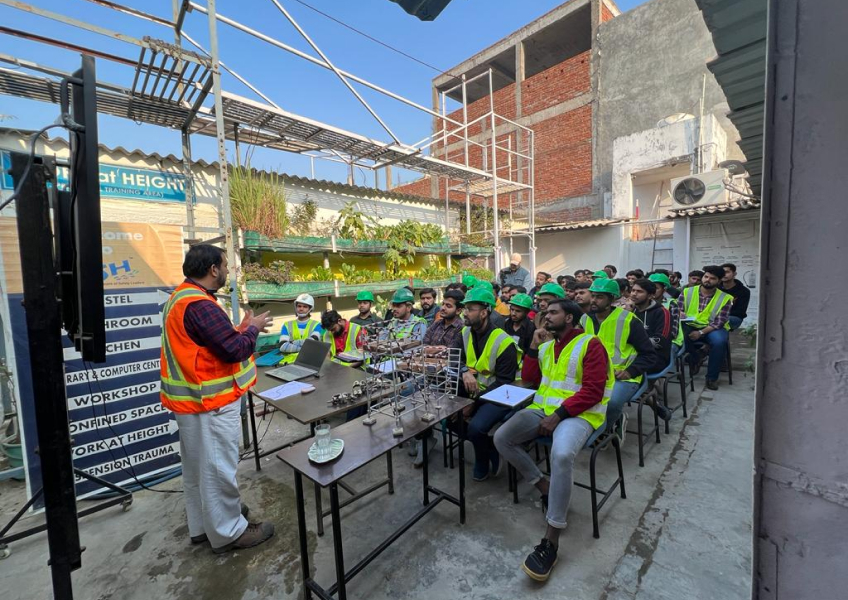Get in touch

Health And Safety Training
Employees can benefit from health and safety training. Safety training encourages them to execute more safe activities at work and fewer (or better — no) dangerous ones. Safety training that reduces the incidence of accidents, injuries, diseases, near-misses, and property damage.
Effective health and safety training doesn’t just happen. It is the result of a focused, deliberate effort that needs a lot of skills and planning. In this article, we'll look at many ways to enhance the efficiency of your health and safety training and make your workplace safer.
So here are a few tips for making your health and safety training more productive.
The first two steps, you'll observe, aren't directly linked to safety training, but safety in general. We believe you will agree that these are logical beginning points.
1. Identify Your Hazards
The first step is to evaluate the workplace for concerns. Your safety training will be effective unless you know what threats you are attempting to shield your workers from.
A job hazard analysis (JHA) is an excellent way to start. During a JHA, a group of people examines a work area for risks connected with a certain profession. They will next work to reduce those risks, which we will discuss eventually.
2. Control Your Hazards
It's a good idea to do a JHA and identify your risks. But it's much better if you can keep your risks under control. If you haven't been aware of "Safety Manager 101," it implies making the workplace safer by removing or minimizing dangers.
One excellent model to utilize for this is what is known in the safety community as the hierarchy of controls. When attempting to control risks, the hierarchy of controls provides a straightforward plan to follow: try elimination first, substitution second, engineering controls third, work practice controls fourth, and PPE fifth. Remember that PPE is always a last choice and that in some situations, other forms of controls may be used in tandem.
3. Know Your Health and Safety Training Regulations
It's also a good idea to learn about the safety training requirements imposed by regulatory agencies such as OSHA or MSHA on your workplace. First, because the law’s the law, and following it is a good thing.
It's also a good idea to look into the safety training requirements that regulatory bodies such as OSHA or MSHA impose on your workplace. For starters, the law is the law, and following it is a good thing. And although complying with the law is a good thing, there are two even genuine reasons to check those safety training regulations:
(a) To ensure you aren't overlooking something the regulation might help you detect.
(b) To create a "baseline minimum" for training that you can then exceed with your training.
4. Have a strategy in place for Your Safety Training
It's a good idea to use a proven technique for giving safety training. If you are acquainted with ANSI Z490.1, the national standard for authorized EHS training approaches, now is an excellent time to learn about it. The standard outlines a step-by-step process for safety trainers like you.
5. Understand Your Learning Objectives
You'll want to develop a set of learning objectives early on in the training design process. Your learning goals are the activities you want your workers to do as a result of their training. Whether you choose the proper learning objectives (for example, securing and labeling machinery before doing maintenance), you can then structure your training to educate employees on how to perform those actions and build assessments to see if employees can accomplish those actions during training. In summary, your learning objectives are the basis for everything else in your training.
6. Acknowledge the "What's in it for me”? Issue
Your employees would pay attention to and engage with training if they understand why it is essential to them. You'll be off to a good start if you describe how training will keep them safe on the job. Remember to structure the training such that it is concentrated on how your employees work.
7. Know About Active Learning
The value of active learning is one of the adult learning concepts we discussed previously. People do not learn by simply sitting and listening to a lecture, as per the study. Rather, they learn when they are actively engaged with this. This might include taking the lead in the training session, actively engaging in a Q&A session, expressing their views and experiences, conducting hands-on training, and other similar activities. Workers will benefit more from training if it is structured with the concept that they must be active participants, and you will have a safe and healthy workplace.
8. Understand Your Adult Learning Principles
The “What's in it for me?” issues, as well as active learning, are examples of adult learning practices, as defined by learning professionals and experts. Adult learning principles, as you might expect, are factors that make adults more inclined to learn. If you incorporate these adult learning concepts into your training, it will be more successful and result in a safer workplace.
9. Know the Value of “Chunking”
Humans can only retain a minimal array of info in our memory recall — perhaps only four. If you give your employees more than that, they will become overwhelmed and nothing will "stick."
10. Know How to Examine the Effectiveness of Your Training
Here's one more thing you should know about successful health and safety training. You can’t just presume it worked if you don't examine the data to see if it's effective. Get out in the field and watch workers' habits and behaviors. Examine your near-miss statistics as well as your injury/illness/incident calculates. Check to see if your training is having the desired effect.
If you can collect data on key performance indicators (KPIs) for safety both before and after training, you will be able to compare your outcomes.
This could include details about diploma programs, certifications, and any other training modules related to health and safety.
Information about the length of courses and the flexibility of online learning options can be crucial for prospective students.
Details about the prerequisites for joining the institute's courses.
Information about any affiliations, accreditations, or recognitions from relevant industry bodies or government agencies.
Background information on the instructors and their qualifications can be important for students considering enrollment.
Details about any career services or support provided to students after completing their programs.
Insight into the teaching methodology and practical components of the courses.
Insight into the potential career paths and industries that value the institute's qualifications.
Background information on the instructors and their qualifications can be important for students considering enrollment.
Related Blogs

Effective health and safety training doesn’t just happen. It is the result of a focused,

Effective health and safety training doesn’t just happen. It is the result of a focused,

Effective health and safety training doesn’t just happen. It is the result of a focused,
Get in touch